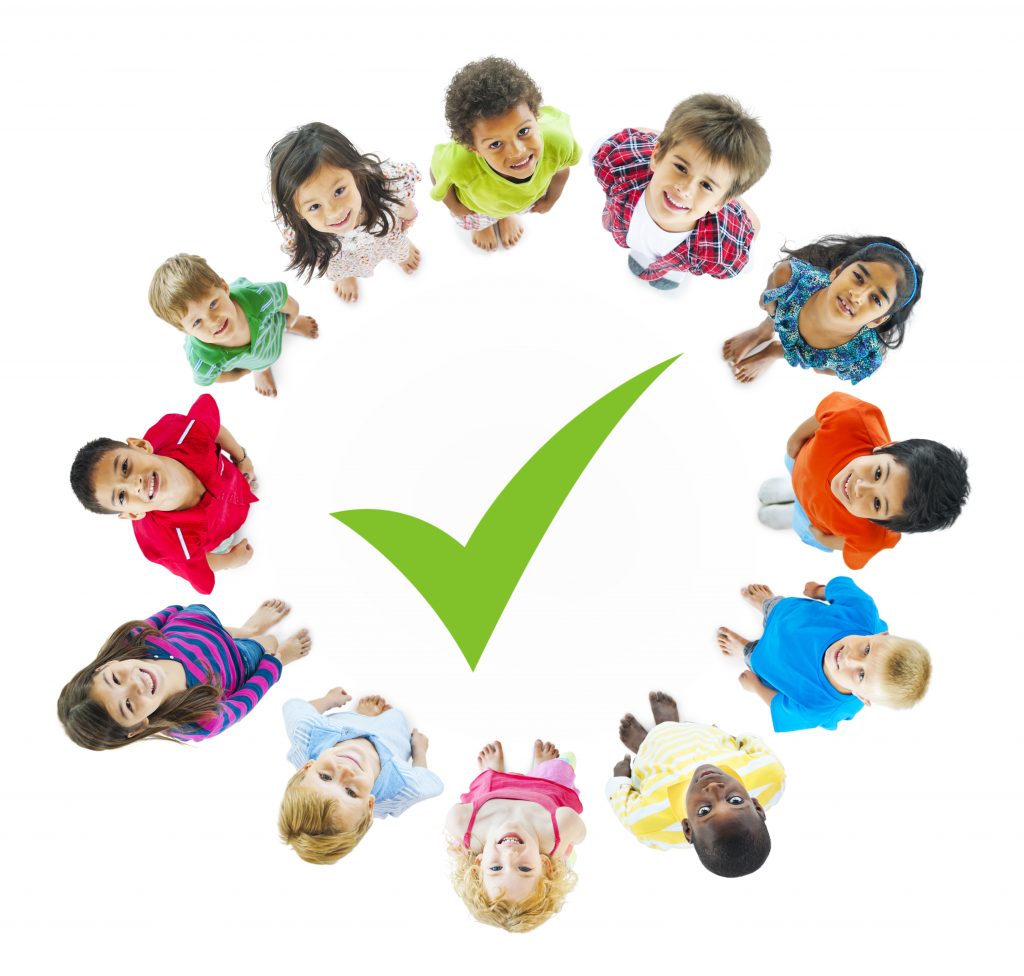“You want me to teach what? Consent?” “My child is too young to hear about sex!” “My students are too young to learn about sex!”
Wait a minute… We can teach young children about consent without talking about sex. And it’s vital that we start now.

Consent Is a Vital Topic to Teach
Education Week published its special report “10 BIG Ideas in Education” to identify the most pressing challenges facing education. Consent is named among those top issues for 2019.
What is it about the topic of teaching kids about consent that earns it a place among the most urgent issues for schools?
- Far too many young people are being sexually abused or assaulted by age 18: one in four girls and one in six boys.
- Education is about preparing young people for adult life, but most high school students say they feel inadequately prepared for taking on adult relationships.
- Current events have revealed the widespread incidences and consequences of people violating others’ boundaries.
Clearly, whatever we’ve been doing is not working.
Some Teachers Are Teaching Lessons on Consent
While asking for permission and respecting the answer is not usually a required part of the school’s curriculum, many teachers are convinced that it is an important skill for students to learn and have developed strategies and activities to teach consent. Children are aware of the current events that have involved violations, and they have questions.
Many sex education curricula include lessons that teach about consent in romantic relationships or related to sexual situations. These lessons in teaching consent to middle schoolers and upper elementary happen when students are learning what sex is. To be most effective, we need to begin teaching consent much earlier. We can do that by teaching consent to elementary students when they ask for permission before they borrow a possession or touch someone. Some teachers have figured out how to teach consent, even before kids are ready to learn about sex. Read about one teacher’s strategy.
Part of teaching consent includes helping children learn what to do if someone violates their boundaries. Adults can encourage children to always tell a trusted adult if someone does something without their permission, or if someone might cause damage or harm. This is called “reporting,” not “tattling.” Reporting can save lives.
So, What We Can Do to Be More Effective?
- Start earlier. Consent can be taught long before students are ready to learn about sexual consent. You can teach consent activities to elementary students, preschoolers, and younger children without referencing sex. Children can first learn how to ask for permission in the context of sharing possessions and personal body space. These lessons begin at birth.
- Be specific. Use correct terms for body parts and functions. Doing so removes the stigma and shame from talking about bodies. It also allows children to report body space violations, sexual abuse, and sexual assault in a clear and accurate way so adults can understand. When we teach children to use slang or pet names for their body parts, we hamper their ability to communicate clearly.
- Teach verbal and nonverbal communication. Communication is vital to teaching consent. Communication about giving or denying permission includes the words we say, such as “Yes” or “No.” However, nonverbal communication, such as gestures, facial expressions, and body movements, are even more communicative. Children need to be specifically taught how to use and interpret both forms of communication. Then, they need to practice listening to the words and interpreting the nonverbal cues in order to be consent literate.
- Teach listening and speaking. Consent involves asking, answering, listening, and responding respectfully. Children need to be taught and encouraged to practice all four steps if it is going to work. Adults can be consistent in requiring children to ask for permission before borrowing someone’s possession or touching someone. Practice makes perfect.
- Be that trusted adult. When children come to adults, it is important that they are taken seriously. Adults, listen and believe what children say. Adults can support children in using their words to say what they want or don’t want. Avoid telling children not to “tattle.” Instead, encourage children to “report” the situations that make them uncomfortable or might result in damage or harm.
- Model consent. Whether borrowing a possession or giving a hug, adults need to be the first to ask for permission. This is the most powerful way to teach the importance of consent in respectful relationships.
Resources for Parents and Teachers
- Interview about teaching consent without discussing sex
- #MeToo blog
- K-5 Consent Toolkit, MOASH
- “We’re Teaching Consent All Wrong,” Education Week
- “Consent for Kids,” video
- “Consent Explained,” video
- “Saying Yes or No: What Is Consent?” video
updated 2023-1-29



